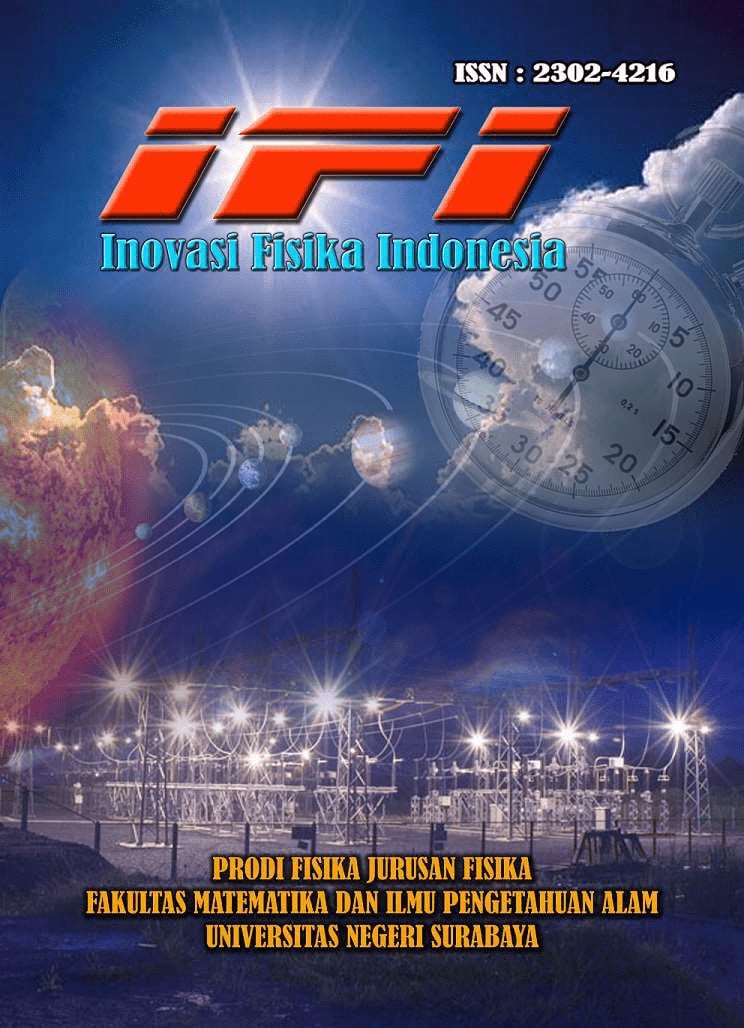RANCANG BANGUN BIDAI ORTOPEDI PINTAR BERBASIS 3D PRINTING DENGAN WIRELESS REAL-TIME MICROCLIMATE MONITOR
DOI:
https://doi.org/10.26740/ifi.v14n2.p216-223Keywords:
bidai, patah tulang, 3d printing, Sensor Mikroklimat, Orthopedic Cast, Bone Fracture, Microclimate SensorAbstract
Abstrak
Imobilisasi ortopedi merupakan bagian penting dalam proses penyembuhan patah tulang atau fraktur. Bidai merupakan alat yang digunakan untuk proses imobilisasi patah tulang atau fraktur dan umumnya berbahan dasar gips dan fiberglass. Bidai jenis ini sering menyebabkan komplikasi kulit akibat penumpukan panas dan kelembapan di bawah permukaan bidai. Kondisi mikroklimat dengan suhu dan kelembapan tinggi dapat memicu maserasi kulit, bau tidak sedap, dan infeksi sekunder yang memerlukan intervensi medis. Penelitian ini dilakukan dengan maksud mengembangkan prototipe bidai ortopedi biofungsional berbasis 3D Printing yang dilengkapi modul sensor suhu dan kelembapan yang ditransmisikan secara wireless. Hasil pengujian menunjukkan bahwa prototipe bidai memiliki kekuatan tekan yang lebih tinggi dibandingkan bidai gips. Uji pemantauan waktu nyata selama dua jam dilakukan pada relawan sehat dengan suhu lingkungan 25 °C menunjukkan bahwa suhu internal bidai berada pada rentang 30–31,2 °C dan kelembapan relatif 64–66%, dengan deviasi ≤1,3% terhadap alat referensi dan nilai p > 0,05 untuk seluruh titik waktu. Fluktuasi suhu dan kelembapan yang diamati mencerminkan dinamika termal fisiologis dan efektivitas ventilasi pada struktur bidai. Prototipe bidai ini menunjukkan kemajuan penting dalam perawatan ortopedi dengan meningkatkan kenyamanan pasien patah tulang, mengurangi komplikasi kulit, dan mengintegrasikan rekayasa biomedik dengan teknologi kesehatan digital.
Abstract
Orthopedic immobilization plays a critical role in the healing process of bone fractures. Casts are commonly used to immobilize fractured bones and are traditionally made from materials such as plaster of Paris or fiberglass. However, these conventional casts often cause skin-related complications due to the buildup of heat and moisture beneath the surface. An enclosed microclimate with elevated temperature and humidity can lead to skin maceration, unpleasant odor, and secondary infections that require clinical intervention. The present study aims to develop a biofunctional orthopedic cast prototype fabricated via 3D printing, equipped with embedded temperature and humidity sensors capable of wireless data transmission. Mechanical testing demonstrated that the 3D-printed cast exhibited higher compressive strength compared to traditional plaster-based casts. A two-hour real-time monitoring test was performed on a healthy volunteer in a controlled environment (25 °C). The internal microclimate within the cast ranged from 30 to 31.2 °C with a relative humidity of 64–66%, showing a deviation of no more than 1.3% compared to calibrated reference instruments (p > 0.05 for all time points). The observed fluctuations in temperature and humidity reflect the physiological thermal dynamics of the skin and the effectiveness of the lattice ventilation design. Overall, the developed prototype represents a notable advancement in orthopedic care by improving patient comfort, reducing the risk of skin complications, and integrating biomedical engineering with modern digital health technologies.
Downloads
References
Al-Qarni, A. A., Alshammari, F. S., & Alshammari, M. S. (2022). Skin complications associated with long-term cast immobilization. Journal of Orthopaedic Science, 27(3), 677–684.
Bishop, M. E., Braden, B., & Lowe, S. (2015). Skin complications associated with immobilization devices: A clinical review. Journal of Wound Care, 24(12), 572–578.
Chung, W. Y., Sung, Y. T., & Lee, J. H. (2020). Design of energy-efficient wireless sensor nodes for long-term physiological monitoring. Sensors, 20(11), 3102.
Fong, J., Velasco, J., & Hussain, M. (2021). Clinical validation of wearable environmental sensing systems for healthcare monitoring applications. Journal of Medical Systems, 45(2), 1–11.
Heikenfeld, J., Jajack, A., Rogers, J., Gutruf, P., Tian, L., Pan, T., Li, R., Khine, M., Kim, J., & Wang, P. M. (2018). Wearable sensors: Modalities, challenges and prospects. Lab on a Chip, 18(2), 217–248.
Jebli, A., Nasr, F., & Feki, M. (2021). Mechanical characterization and analysis of gypsum composites for medical casting applications. Materials Today: Proceedings, 44, 2493–2499.
Kassal, P., Steinberg, M. D., & Steinberg, I. M. (2018). Wireless chemical sensors and biosensors: A review. Sensors and Actuators B: Chemical, 266, 228–245.
Kim, J., Campbell, A. S., de Ávila, B. E. F., & Wang, J. (2020). Wearable biosensors for healthcare monitoring. Nature Biotechnology, 37, 389–406.
Mahmood, S., Rashid, A., Ali, M., & Ibrahim, M. (2019). Effect of infill patterns on mechanical performance of FDM-printed PLA structures. Journal of Materials Research and Technology, 8(5), 4724–4737.
Pugliese, R., Brancato, V., & Netti, P. A. (2017). 3D printing of biomedical devices for orthopaedic applications: A review. Journal of Functional Biomaterials, 8(2), 1–15.
Rogers, J., Hull, T., & Geng, J. (2021). Mechanical response of honeycomb lattice structures fabricated via fused deposition modelling. Additive Manufacturing, 46, 102087.
Tsiropoulou, S. E., Remoundos, C., & Koutsoumpis, S. (2022). Biocompatibility and mechanical strength evaluation of 3D‐printed PLA for orthotic applications. Materials Today: Proceedings, 64, 1474–1479.
Yousif, A. Z., Sultan, O. M., & Osman, T. A. (2020). Mechanical performance of plaster cast compared with fiberglass and polymer-based alternatives. Biomedical Engineering Letters, 10(4), 639–646.
Downloads
Published
How to Cite
Issue
Section
License
Copyright (c) 2025 fajar timur, Reffany Choiru Rizkiarna, Primasari Cahya Wardhani, Akbar Sujiwa, Bayu Prasetya

This work is licensed under a Creative Commons Attribution-NonCommercial 4.0 International License.
 Abstract views: 76
,
Abstract views: 76
, PDF Downloads: 70
PDF Downloads: 70








1.png)
